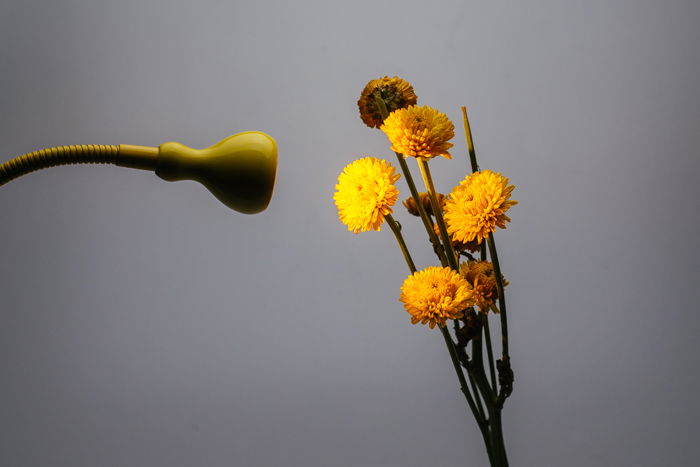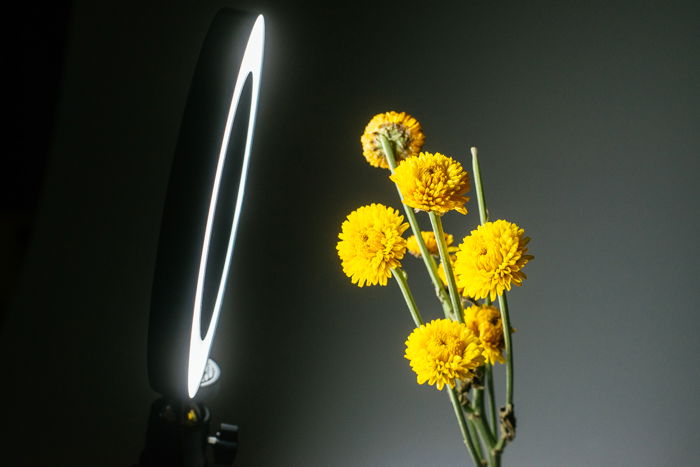Lighting is one of the main challenges of macro photography. When you get too close to your subject, you end up blocking the light and end up with a bad image.
If you’re eager to learn how to avoid this problem, read on. This article is full of great macro photography lighting tips.
7. Macro Photography Lighting: Taking Macro Shots in the Morning When the Sun Isn’t So Strong
Macro photography lighting can be challenging when shooting outdoors. You don’t have any control over the angle of the light. That’s why it’s crucial to figure out where the sun’s position is in the sky.
When shooting macro subjects, you don’t have to wait for the golden hour as you do in other types of photography. In most cases, you can expect beautiful macro shots as long as the sun is shining about 45 degrees in front of your subject.
It’s also important to note that a lot of macro photographers shoot during the morning. Flowers look fresh when covered in morning dew. It’s also during this time when insects start to appear.
The only time you need to avoid is shooting at noon when the sun is high up in the sky. If you see ugly shadows on your subject, better wait a few hours until the sunlight isn’t as intense.
Or you can find a shady area that absorbs some of the harsh backlight.
If you want to shoot in a specific location, feel free to visit it first before shooting. Figure out what time the macro lighting looks good so you know when to go.

6. Bounce Light With a Reflector
You might be in a spot where the lighting is bad no matter the time of day. Consider using lighting equipment such as a reflector.
In simple terms, a reflector bounces off the light to fill in the ugly shadows around your subject.
Just note that using a reflector wouldn’t work if the sun is behind you. So always make sure you’re opposite it to successfully bounce off light. Keep moving it around until it reflects the sunlight on to the object you’re shooting.
There are many types of reflectors you can buy on the market. The best ones for macro photography are the small round ones.
They have enough surface area to create reflections but are still small enough to move around when shooting.
If you don’t have a reflector, use white cardboard instead. It works just as well, and you can even cut it smaller to fit in tight areas.
You can also shape aluminum foil into a curve to concentrate beams of light onto your subject. It’s also easy to cut into a smaller piece if you don’t have enough space for a large reflector.

5. Diffuse the Light to Create Even Lighting
If you have to shoot when the sun is high in the sky, then consider using a diffuser. All it does is spread harsh light (such as from direct sunlight) to create a softer exposure.
You can buy diffusers in various sizes. They’re usually made of thin silk-like translucent material that only lets through a portion of the light source.
Eliminating some of that harsh light not only gives you continuous lighting, but it also produces soft shadows.
If you don’t have a diffuser, you can try using a white umbrella, instead. It not only shields your subject from the sun, but it also protects you from the heat.
Sure, it feels a bit ridiculous but it works. Especially when the sun is bright.
And what if you don’t have a diffuser or a white umbrella? Then all you have to do is wait for some clouds to block the sun. They also work well as diffusers since they’re good at spreading as well as blocking some of the sunlight.
Since the weather can be unpredictable, it’s always better to bring a diffuser instead of waiting for clouds all day.

4. Shoot by a Window When Indoors
Windows work as perfect diffusers when taking pictures indoors. Since they spread out the light from the sun, they create soft lighting around your subject.
You can shoot by the window almost any time of the day. All you have to do is place your subject beside the window and you start shooting. Just make sure the one you choose is letting in enough light.
Sometimes, windows can also let too much light in and potentially overexpose your shots. What you can do is place a curtain over it to spread out the light.
Avoid any patterns that could cast ugly shadows on your subject. The best option for you is to look for one that has fine stitching and no designs at all.
You should also avoid windows that cast direct sunlight on to your subject. If you don’t, you’ll end up with stark shadows just like you would when shooting outdoors.
You can either look for another window or wait for the sun to move.

3. Try Desk Lamps for Artificial Lighting
What if it’s getting dark but you still need to take photos indoors? Another great photography lighting setup you can try is using a simple desk lamp.
Any desklamp works, but the best option is the one that has an adjustable neck. That way you can position it in any angle without much effort.
The light bulb you use is also crucial in helping you get the shot you want. The best choice for you is a daylight bulb because it replicates the color temperature of the sun.
But If you prefer photos that look cool to the eyes, then you can also try a white bulb. And if you like warm colors, then use bulbs that give out orange or yellowish light, instead.
When using artificial light, feel free to move it around and experiment with the best angles for lighting your subject.
It would also help a lot if you set up your camera on a tripod. Since desk lamps have a weaker light output, you may need to use slow shutter speed to achieve the correct exposure.
It will keep your equipment stable to avoid motion blur.

2. Experiment With LEDs for Less Warm Artificial Light
Your options aren’t just limited to incandescent light bulbs when trying out photography lighting techniques. You can also try LEDs to illuminate your subjects.
They’re not only power efficient, but they’re also smaller and not as warm as their other light sources.
Like incandescent light bulbs, LED lights also vary in color temperatures. Some appear white and cool while others look yellow and warm.
But there are also bicolor LEDs that let you change the hue of the LED output. They’re called such since you get to choose between cold and warm colors in one system.
When taking pictures, you can use LEDs from regular items such as flashlights or even your phone. But you can also invest in lighting panels specifically made for photography.
They not only produce brighter output, but they also allow you to adjust the amount of light when shooting.
LED panels for photography come in a variety of shapes and sizes. Some are rectangular while others are round. Some can fit in your pocket, while others may need a stand. All these options work.
The best ones are usually compact and have bright output. The reason is you can easily take them anywhere and position them in tight places.

1. Incorporate Flash for Even Brighter Light
If you need a light that’s brighter than regular light bulbs or LEDs, then you may need to use flash.
Flash is much more challenging to use because it’s not continuous light. In other words, you don’t see the light it produces until the moment you press the shutter.
That means you’ll need to take some test shots to see if you’re getting the correct exposure.
But what makes flash better than using a desk lamp or LED is its powerful output. Since it’s bright, it can easily replicate the intensity of the sun in pictures.
It also allows you to shoot at faster shutter speeds than when using regular light bulbs.
There are many types of flashes out there made for various purposes. What you want is a flash unit that’s perfect for macro photography.
Regular speedlites (common flash units that attach to the top of the camera) work well for shooting small subjects. But there also custom units that are made specifically for macro photography.
A macro flash can be round or rectangular. Although it attaches to the hot shoe of your camera, its lighting element usually extends out in front of the lens. That way, the light it produces is not accidentally blocked by the lens shaft.
The macro flash’s design also evenly illuminates the subject because the flash head is positioned directly in front of the object.
In many ways, shooting with flash is much like shooting with other artificial lights. The only difference is the light isn’t on at all times.
Always check the exposure when shooting. Then adjust the brightness accordingly to make sure your next image is properly lit.

Conclusion
The macro photography lighting tips we included in this article are not limited to one type of situation. You can always combine different lighting techniques to achieve the results you want. You can even use both artificial and natural light at the same time if you want.
Feel free to experiment and practice the methods you learned today. As you gain experience, you’ll see the pros and cons of each set-up and figure out how to solve difficult lighting situations using your own unique set-up.
